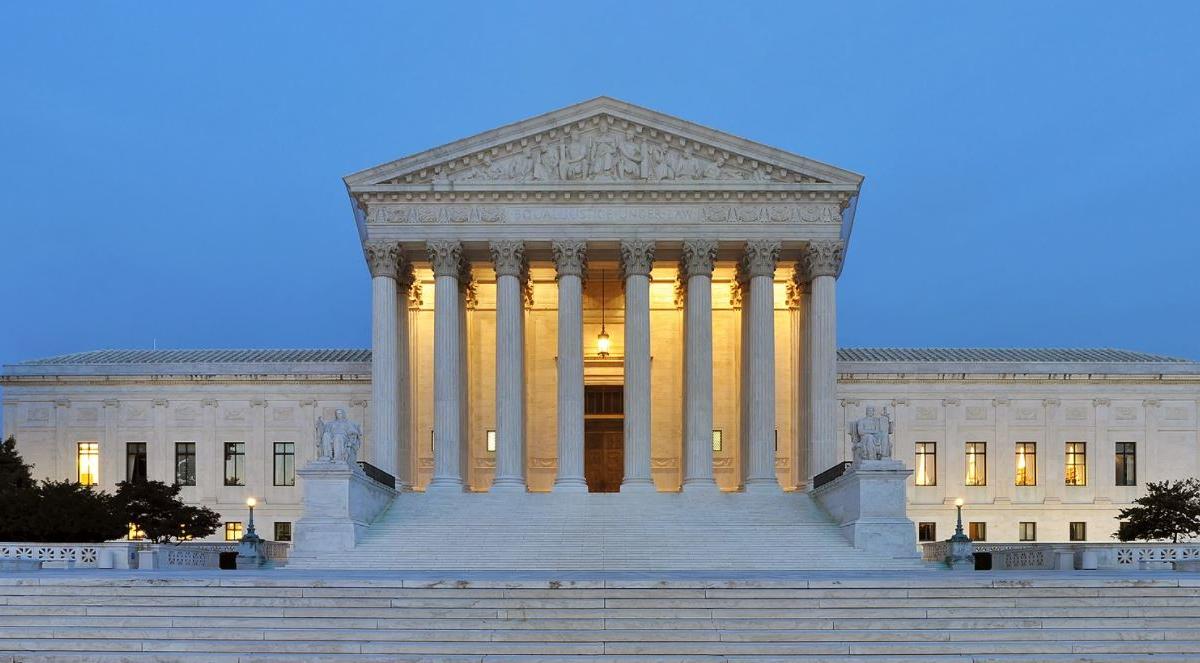
The US Supreme Court is now in the midst of ruling on whether or not US member states have the legal prerogative to significantly limit legal abortion within each state’s borders. With the Roe v. Wade ruling in 1973, the US Supreme Court “discovered” that the US Constitution prohibited state and local governments from enforcing laws limiting abortion.
Since the Roe decision, subsequent Supreme Court rulings on abortion have tinkered with just how much state lawmakers shall be limited in passing any restrictions on abortion. Federal judges have created a variety of legal standards revolving around the viability of the fetus or whether or not a legal limit on abortion places an undue burden on those seeking to abort a fetus. As described in Planned Parenthood v. Casey:
An undue burden exists and therefore a provision of law is invalid if its purpose or effect is to place substantial obstacles in the path of a woman seeking an abortion before the fetus attains viability.
It’s About Federal Control over States and Local Governments
Fundamentally, however, the debate over SCOTUS rulings is about whether or not the nature of legal limits on abortion shall be dictated to state governments by federal judges and bureaucrats. In other words, after 1973, the US Supreme Court “federalized” abortion, which until then had been almost totally and exclusively a matter for state and local governments.
(For a summary of abortion policy before Roe, see: “Before Roe v. Wade, Abortion Had Always Been a State and Local Matter.”)
Thus, should the Supreme Court justices overturn Roe v. Wade either partly or in toto, the situation will only a be a return to what existed fifty years ago: abortion will be legal in some states and illegal (or heavily limited) in others. The prerogative of states to keep abortion legal has never been in question, and in the late 1960s, many states were rapidly expanding abortion access, starting with widespread liberalization in Colorado in 1967, and expanding to eleven other states by 1970.
Moreover, Americans today—as always—will be free to travel across state lines without impediment to any state that allows legal abortion. These states will surely include most of the nation’s most populous states.
Indeed, at least one state—California—has already made it clear that it will be a “sanctuary” for people looking to procure abortions. The Associated Press reports:
California clinics and their allies in the state Legislature on Wednesday revealed a plan to make the state a “sanctuary” for those seeking reproductive care, including possibly paying for travel, lodging and procedures for people from other states.
Advocates Want Mandatory One-Size Fits-All Policy
This sort of sanctuary plan has always been perfectly legal and feasible as an answer to localized limits or prohibitions on abortion. And plans like this, from the perspective of true “choice,” illustrate the value of decentralizing abortion policy. Those parts of the country where a majority of the population favors abortion will have legal abortion. Those parts of the country where abortion is unpopular can restrict it. Moreover, those who find themselves in the minority in either case can vote with their feet and relocate to a place with fewer objectionable policies.
This is all the more important in cases that revolve around fundamental human values such as the nature of an unborn child. Whether or not a fetus has human rights deserving of legal protections is not a matter that can be solved with “democracy“ or “compromise.“ Either a fetus is a legal person with rights or not. There is no in-between position that is likely to satisfy either side.
This leaves us with two options: either accept that some people in other parts of the country will do things differently or federalize policy to impose a one-size-fits-all “solution“ on everyone.
The proabortion side, however, has long made clear that it is unwilling to tolerate local prerogatives on this matter. That is, it is not enough that abortion be available to any American capable of freely traveling across state lines. Abortion, we are told, must also be convenient. Abortion advocates also complain of “abortion deserts”—a term apparently inspired by the alleged “food deserts” in some areas—in which those seeking abortions must travel to find a willing clinic.
In pursuit of securing this convenience, abortion advocates make the case that variations in accessibility from place to place are de facto prohibitions that ought to be considered intolerable. After all, having to drive across state lines from, say, Idaho to Washington State, is more costly than driving down the street in Boise.
The implied conclusion is that restrictions such as these diminish “choice” and that everyone is every location ought to have “equal access” and “equal choice” in obtaining abortions regardless of location.
What is forgotten, however, is that by guaranteeing this kind of “choice” other types of choice must be eliminated: the choice of living in a jurisdiction where abortion is limited, for example, where the local legal system did not—as they saw it—protect or foster abortion.
What Real “Choice” Looks Like
It is with this latter sort of “choice” in mind, of course, that political decentralization was created. As was once long assumed in the US in regard to issues like abortion, tax laws, business regulations, and alcoholic beverages, a respect for local autonomy provided greater choice and greater compromise in which differences in morality and ideology were respected from place to place.
There are other practical benefits as well. This sort of jurisdictional choice reduces the stakes in national elections, fosters greater respect for local democracy, reduces cross-regional conflict, and allows for Americans to more easily relocate to legal jurisdictions that better suit their political values.
Without decentralization on this issue—and many other issues—every national election becomes a national referendum on which factions will control every aspect of American life and dictate conditions from a centralized national seat of government.
Moreover, the advantages of this approach work in both directions, and decentralization can hardly be shown to be just a right-wing plot. After all, the presence of some political decentralization has been key in drug legalization efforts and the “sanctuary city” movement favored by proimmigration activists. Historically, decentralization fostered the growth of the antislavery movement and nullification of the federal fugitive slave laws.
Decentralization Is Not Perfect
None of this is to say that the decentralization approach is without a downside for anyone involved. It is true that decentralizing abortion policy would indeed lead to more costly travel requirements for those seeking abortions. But this is also true for countless other issues. Residents of Pennsylvania seeking to legally consume recreational marijuana must travel out of state—often at a high price. Entrepreneurs seeking lower barriers to opening a business may often find the local regulatory environment too inhospitable.
Nor is it the case that any law or policy is fine and acceptable so long as it’s done at the state and local level. Marijuana criminalization, for example, is objectionable at every level of government. High taxes are impoverishing whether imposed by the city council or by Congress. But it is better that there be variety and competition among jurisdictions rather than a situation in which policies are all decided by one group of nine wealthy federal judges—and then imposed on 320 million Americans.
Yes, the cost of moving or traveling to another jurisdiction can be costly. Recognizing the realities such as these, Felix Frankfurter once concluded (when he opposed a federal law on child labor) “we must pay a price for federalism” by which he meant that decentralization may force us to accept that not every law in every place will suit our personal preferences. But, as Frankfurter also noted, there are often advantages to paying that price.
This article is a modified version of an article that was originally published December 9, 2021.





